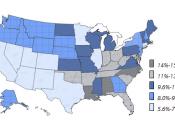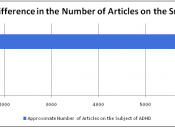Hyperkinetic is just another word for Hyperactive. Hyperactivity describes children who show numerous amounts of inappropriate behaviors in situations that require sustained attention and orderly responding to fairly structured tasks. Humans who are hyperactive tend to be easily distracted, impulsive, inattentive, and easily excited or upset. Hyperactivity in children is manifested by gross motor activity, such as excessive running or climbing. The child is often described as being on the go or 'running like a motor', and having difficulty sitting still. Older children and adolescents may be extremely restless or fidgety. They may also demonstrate aggressive and very negative behavior. Other features include obstinacy, stubbornness, bossiness, bullying, increased mood lability, low frustration tolerance, temper outbursts, low self-esteem, and lack of response to discipline. Very rarely would a child be considered hyperactive in every situation, just because restraint and sustained attentiveness are not necessary for acceptable performance in many low-structure situations.
Many parents rate the onset of abnormal activity in their child when it is and infant or toddler. Abnormal sleep patterns are frequently mentioned, the child objects to taking naps, he also seems to need less sleep, and becomes very stubborn at bedtime. Then, when the child is seemingly exhausted, hyperactive behavior may increase. Family history studies show that hyperactivity, which is more common in boys than in girls, may be a hereditary trait, as are some other traits (reading disabilities or enuresis-bed wetting). Certain predisposing factors affect the mother, and therefore the child, at the time of conception or gestation or during delivery. Included are radiation, infection, hemorrhage, jaundice, toxemia, trauma, medications, alcohol, tobacco, and caffeine. The course of the syndrome typically spans the 6-year to 12-year age range. In many classrooms, children who display inappropriate overactivity (restlessness, moving around without permission) , attention deficits (distractible by task-irrelevant events,


